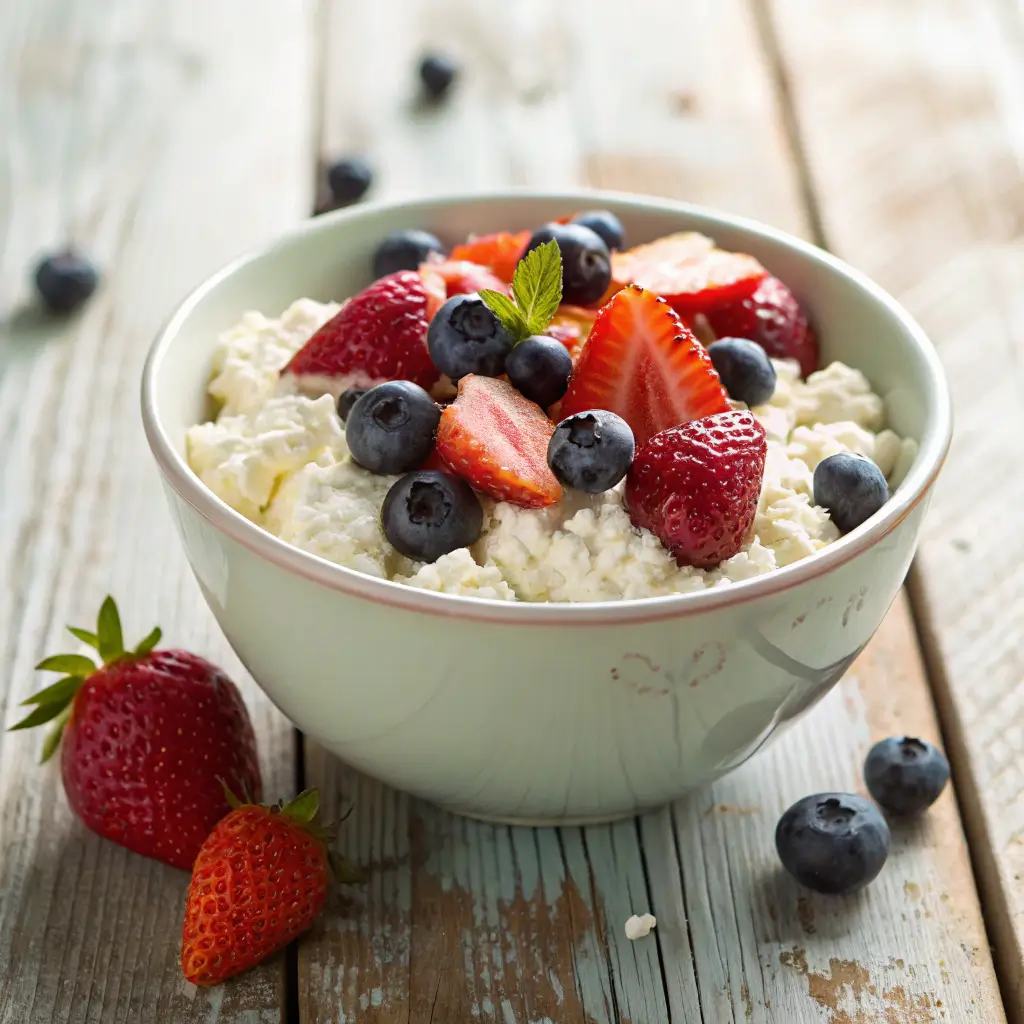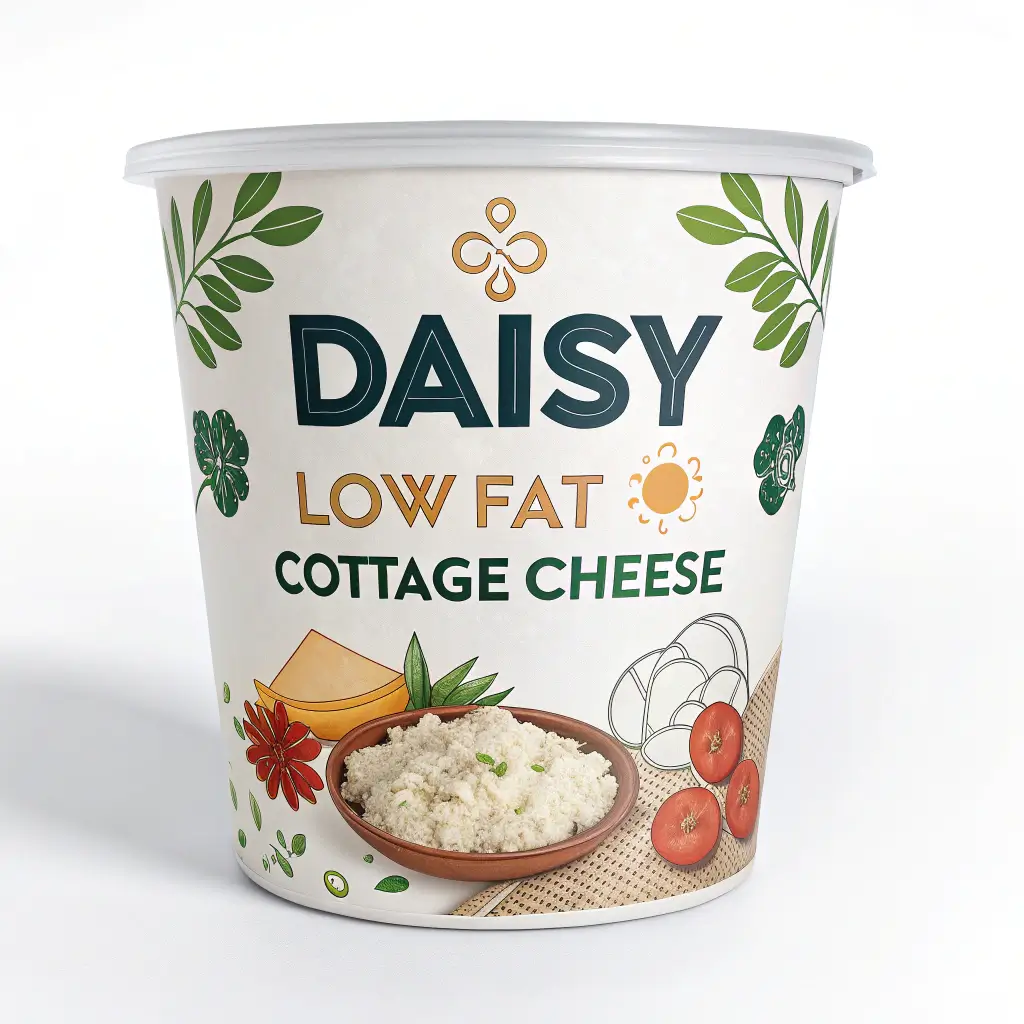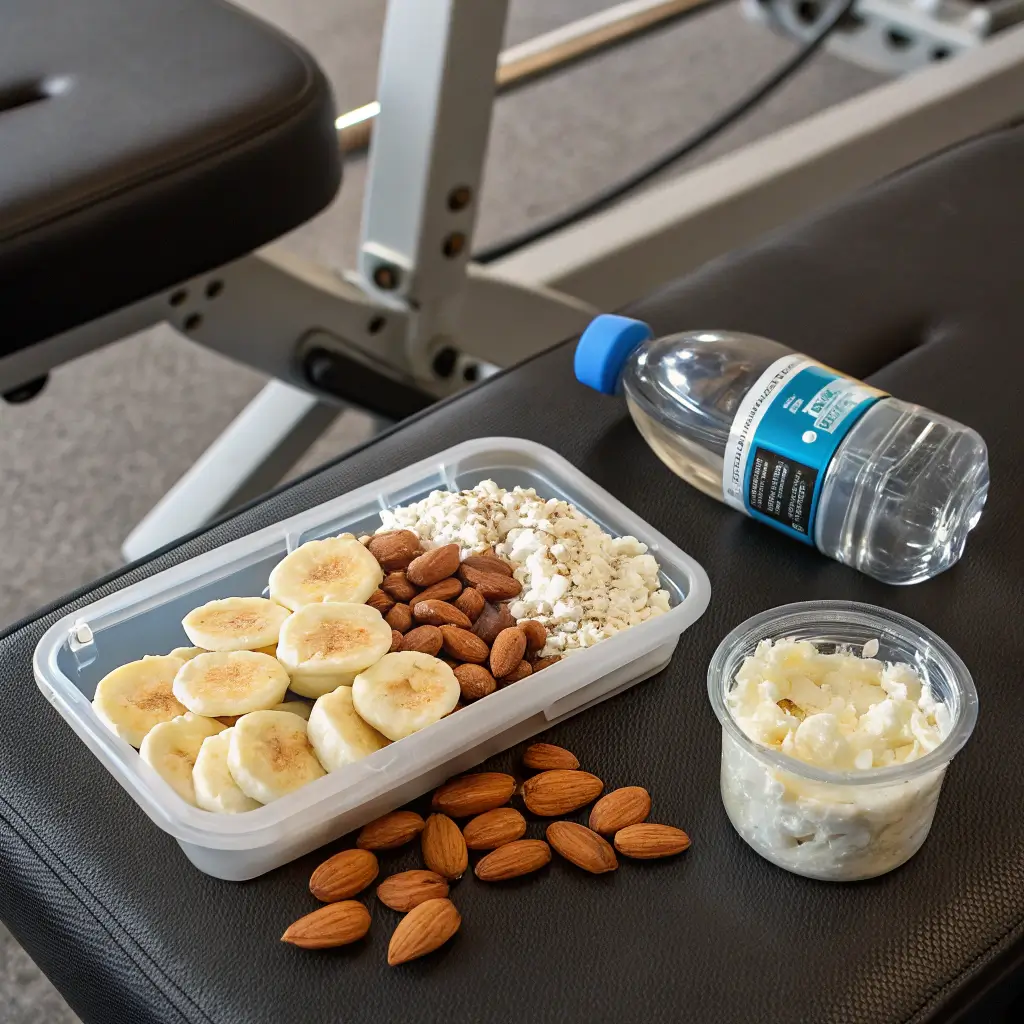
Cottage cheese has made a major comeback, and Daisy Cottage Cheese is leading the charge. Known for its clean ingredients, creamy texture, and nutritional benefits, it’s become a go-to staple in fridges across America. Whether you’re looking for a high-protein snack, a low-fat dairy option, or a versatile ingredient in meals, Daisy stands out from the pack.
In this comprehensive guide, we’ll explore everything from Daisy cottage cheese nutrition, ingredient transparency, recipe ideas, to its viral commercial buzz. We’ll also answer common questions like “Is Daisy Cottage Cheese healthy?”, and dive deep into comparisons with other brands.
Looking for inspiration? Try this nutritional breakdown on cottage cheese to start seeing why it’s become such a powerful pantry item.
Table of Contents
Table of Contents
The Rise of Daisy Cottage Cheese in American Kitchens
How Daisy Became a Trusted Household Name
Daisy Brand has been around since 1917, but its cottage cheese didn’t rise to household fame until recent decades. Known originally for sour cream, the brand’s expansion into cottage cheese daisy products quickly earned praise for quality and simplicity.
Unlike some competitors that load their products with additives or preservatives, Daisy’s clean-label promise – “only what you need, no extras” – struck a chord with health-conscious shoppers. This has helped Daisy become one of the most recognizable names in the dairy aisle.
The brand markets its cottage cheese as fresh, pure, and minimally processed. That’s helped fuel a growing trend among younger consumers who care about nutrition and transparency.
Why Cottage Cheese Is Booming Again in the U.S.
For years, cottage cheese had a reputation as bland diet food from the ’80s. But modern health trends have rewritten that story. Now, people are using it in everything from high-protein pancakes to post-workout smoothies.
There are a few reasons for this boom:
- High protein content without the sugar crash
- Low-carb, keto, and paleo friendly
- Great source of calcium and probiotics
- Versatile in both sweet and savory dishes
As Americans move toward whole-food diets, Daisy low fat cottage cheese is hitting the sweet spot between health and convenience.
Don’t miss our post on using cottage cheese for babies, which shows how early nutrition can benefit from Daisy’s simple ingredients.
And when brands like Daisy offer clear, readable labels, a short ingredient list, and a flavor that blends well in meals, it’s easy to see why it’s trending.
What Sets Daisy Cottage Cheese Apart From Other Brands
Daisy Cottage Cheese Ingredients and Clean-Label Philosophy

When it comes to simplicity and health, Daisy truly delivers. Unlike many commercial cottage cheese brands filled with thickeners and additives, Daisy Cottage Cheese ingredients are refreshingly minimal. In fact, the regular and Daisy low fat cottage cheese options often contain no more than:
- Cultured skim milk
- Cream
- Salt
- Vitamin A Palmitate (for fortified nutrition)
That’s it. No gums, no preservatives, and no nonsense. This clean-label commitment makes Daisy a preferred choice for people following low-processed or whole-food diets.
Consumers appreciate what they’re not eating just as much as what they are. With Daisy, there’s no carrageenan, guar gum, or starch. Just real dairy goodness.
Daisy Low Fat Cottage Cheese Nutrition vs. Full-Fat Options
Many people wonder: Is low fat just code for low flavor? Not with Daisy. Its low fat cottage cheese nutrition is impressive:
| Nutrient | Low Fat (per 1/2 cup) | Regular (per 1/2 cup) |
|---|---|---|
| Calories | 90 | 110 |
| Protein | 13g | 14g |
| Fat | 2g | 5g |
| Carbohydrates | 4g | 3g |
| Sodium | 360mg | 380mg |
As you can see, Daisy low fat cottage cheese still packs in a solid amount of protein while cutting the fat nearly in half. It’s an ideal choice for those watching their calorie intake without sacrificing nutrients.
A Deep Dive into Daisy Cottage Cheese Nutrition Facts
Macronutrient Breakdown: Protein-Packed and Low in Sugar
Daisy Cottage Cheese nutrition hits the right notes for both macro and micro needs. Here’s why it’s so popular in meal prep and fitness routines:
- Protein: 13–14g per serving makes it a great muscle-building snack.
- Fat: With low-fat and regular options, it suits a range of dietary goals.
- Carbs: Daisy is naturally low in sugar, often just 3–4 grams per serving.
- Sodium: Compared to flavored yogurts, it’s significantly lower.
That balance makes Daisy ideal for weight management, clean eating, or recovery fuel.
Vitamins, Minerals, and Probiotic Benefits
Beyond the macronutrients, Daisy is a source of essential vitamins and minerals like:
- Calcium – Supports bones and teeth
- Phosphorus – Vital for energy storage and bone health
- Vitamin A – Fortified in most Daisy varieties
- B Vitamins – Naturally occurring through cultured dairy
While Daisy doesn’t add live probiotic cultures like some yogurts, it still contains naturally occurring strains due to the fermentation process. These can support digestion and gut health when eaten regularly.
If you’re exploring gut-friendly dairy, don’t miss our lactose-free cottage cheese guide, perfect for sensitive stomachs.
Health Benefits of Including Daisy Cottage Cheese in Your Diet
Weight Management and Satiety
Because of its high protein and low sugar profile, Daisy Cottage Cheese can help control hunger and reduce snacking. Protein is more satiating than carbs or fats, meaning you stay fuller longer. It’s also thermogenic, meaning your body burns more calories digesting it.
Eating just one serving of Daisy low fat cottage cheese as a mid-morning or post-dinner snack can curb cravings and reduce unnecessary calorie intake.
Muscle-Building and Post-Workout Recovery
Daisy is a favorite among athletes and fitness coaches. Why?
- It contains casein protein, which digests slowly to fuel muscles over time.
- It’s a great post-workout meal, especially when paired with fruit or oats.
- The low sugar makes it perfect for maintaining a lean physique.
If you’ve just finished a tough session, a bowl of Daisy cottage cheese with fruit offers protein, carbs, and a hydration boost. It’s one of the most affordable and effective recovery snacks out there.

Check out this muscle-recovery recipe using cottage cheese for a quick refuel idea.
Popular Ways to Enjoy Daisy Cottage Cheese With Fruit and More
Easy Pairings With Fruit, Nuts, and Granola
You don’t need to be a chef to make Daisy delicious. Some of the best combos are simple:
- Daisy cottage cheese with fruit: Try pineapple, strawberries, or peaches.
- Topped with nuts: Almonds or walnuts add crunch and healthy fats.
- Sprinkled with granola: A perfect breakfast that blends fiber and protein.
- Drizzle of honey or cinnamon: For a natural sweet twist.
It’s also a fantastic base for smoothies or blended spreads for toast.
Savory Recipe Ideas With Daisy Low Fat Cottage Cheese
Prefer savory to sweet? Daisy’s mild flavor makes it adaptable:
- Mix with avocado and lime juice for a creamy dip
- Use as a lasagna layer or stuffed in peppers
- Blend into scrambled eggs for creaminess without butter
- Spread on whole-grain toast with sliced tomatoes and basil
For even more culinary creativity, discover our top cottage cheese brands comparison to see how Daisy stands up in different recipes.
Comparing Daisy Cottage Cheese With Other Brands on the Market
Which Cottage Cheese Is Healthiest?
When deciding which cottage cheese deserves a spot in your fridge, nutrition and taste matter most. Let’s break it down:
| Brand | Calories | Protein | Ingredients Simplicity |
|---|---|---|---|
| Daisy | 90–110 | 13–14g | Very Clean (no gums) |
| Good Culture | 110 | 14g | Probiotics added |
| Breakstone’s | 110–120 | 12–13g | Includes additives |
| Hood | 100–120 | 12g | Often includes starch |
Daisy Cottage Cheese consistently wins for its minimal ingredients and solid protein content. While others might offer added probiotics or different textures, Daisy’s real edge lies in clean-label transparency.
What Dietitians and Consumers Say About Daisy
Health professionals often recommend Daisy low fat cottage cheese because it’s:
- Low in sugar
- High in protein
- Free of stabilizers and thickeners
- Budget-friendly
Online reviews also highlight its texture and consistent flavor, with many parents calling it a “kid-friendly” snack option.
FAQs :
Is Daisy Cottage Cheese healthy?
Absolutely. It’s high in protein, low in sugar, and made with just a few clean ingredients. Both the regular and Daisy low fat cottage cheese versions support muscle recovery, weight management, and healthy snacking.
Who is the Daisy Cottage Cheese girl?
While her identity remains unconfirmed, she’s become the face of Daisy’s recent ad campaign—portraying a healthy, energetic lifestyle that aligns with the product.
Is the girl from The Bachelor on the Daisy Cottage Cheese commercial?
Despite online speculation, there’s no evidence that a Bachelor contestant features in the ad. It’s just a look-alike!
Which cottage cheese is healthiest?
Daisy ranks at the top thanks to its low sugar, clean-label ingredients, and balanced macros. For probiotic-specific needs, Good Culture may be a close second.
Final Verdict – Why Daisy Cottage Cheese Deserves a Spot in Your Fridge
The Balanced, Smart Choice for Modern Diets
Whether you’re managing your macros, looking for a post-workout recovery food, or simply want a creamy snack, Daisy Cottage Cheese delivers on all fronts. It’s:
- Clean and simple
- Affordable
- Protein-rich
- Versatile
Daisy cottage cheese with fruit makes a fantastic snack, while savory dishes gain a creamy boost from its mild flavor. Plus, the brand’s transparent ingredients make it a safe pick for families.
Conclusion
Daisy Cottage Cheese is more than just another dairy product—it’s a smart nutritional choice backed by clean ingredients, trusted quality, and growing popularity. With options that fit any dietary lifestyle, it’s no wonder so many health-conscious Americans keep a tub in the fridge.
For more recipes, follow us on Facebook.
Print
Daisy Cottage Cheese: Nutrition, Benefits, and Real Facts Behind the Creamy Favorite
- Total Time: 5 minutes
- Yield: 1 serving
Description
Explore the health benefits, clean-label promise, and versatile recipe uses of Daisy Cottage Cheese – the creamy, high-protein favorite in American fridges.
Ingredients
- Cultured skim milk
- Cream
- Salt
- Vitamin A Palmitate
Instructions
- Enjoy as a snack with fruit like strawberries, pineapple, or peaches.
- Pair with granola or nuts such as almonds or walnuts for a high-protein breakfast.
- Blend into smoothies or mix with oats post-workout.
- Use in savory dishes – stuff into bell peppers, layer in lasagna, or blend with herbs for dips.
- Store in the fridge and use within the expiration date for best taste and texture.
Notes
Daisy Cottage Cheese stands out for its simple ingredients and nutritional balance, making it ideal for fitness routines and everyday meals.
- Prep Time: 5 minutes
- Cook Time: 0 minutes
- Category: Snack
- Method: No-Cook
- Cuisine: American
